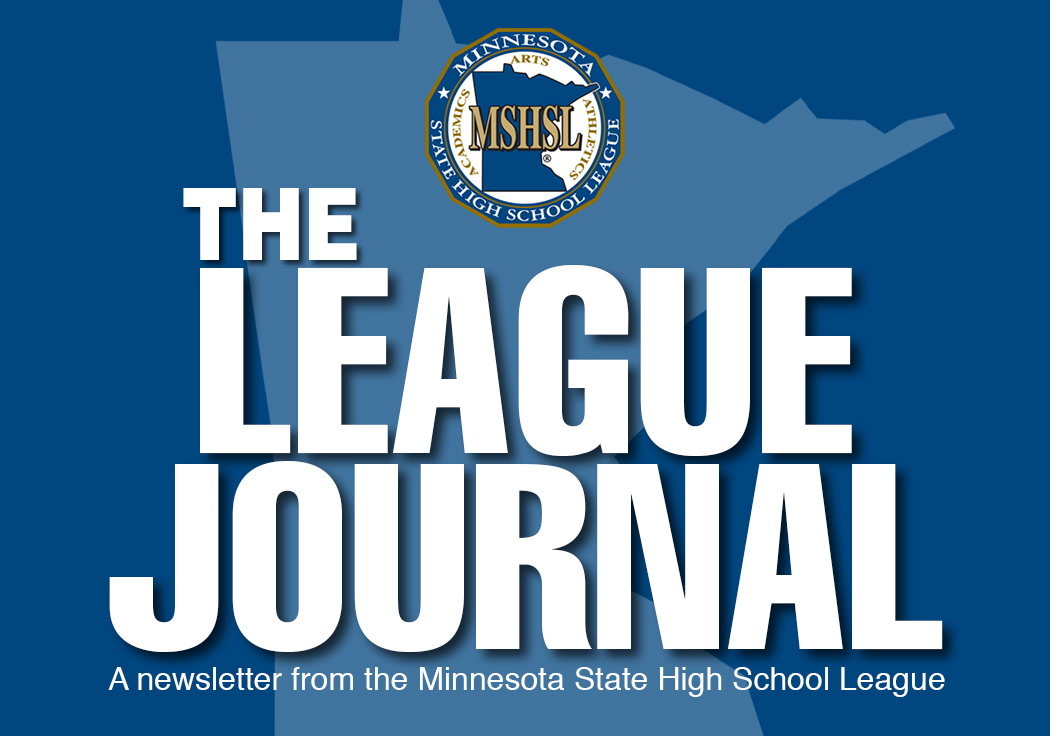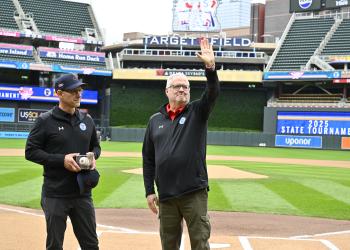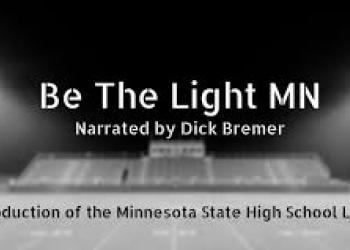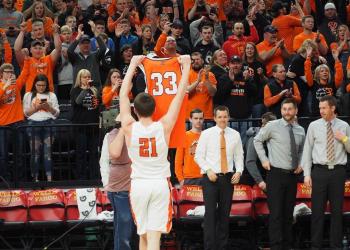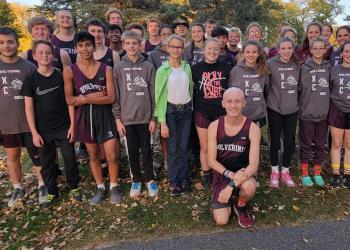John’s Journal: Three Dates, Three Decisions
Covid-19 Has Changed Things, And We Can Expect More Change
Posted: Wednesday, September 23, 2020 - 1:42 PM
When I think about the current landscape of Minnesota high school activities, everything centers around three days on the 2020 calendar: March 12, August 4 and September 21. Let’s go through the significance of each…
March 12: This was the second day of the four-day girls state basketball tournament, and as things turned out it also was the final day of the tournament as we began learning how Covid-19 was impacting every part of daily life across the globe.
August 4: The MSHSL board of directors made a decision that no one, including board members, wanted to see. But for the sake of health and safety, they postponed the fall football and volleyball seasons until next spring while allowing soccer, cross-country, girls tennis and girls swimming and diving to continue under virus-related restrictions.
September 21: As special meeting of the MSHSL board resulted in the decision to revive volleyball and football this fall, with shortened seasons and spectator limits (no fans for volleyball, 250 for football).
None of those decisions were easy for anyone to make and were/are difficult for some to accept. But whether it was the MSHSL staff deciding to stop the girls state basketball tournament at the halfway point (as well as halting the boys basketball postseason) or the board making drastic changes to fall sports, the health of everyone involved was paramount.
All these months into this worldwide pandemic, there is a lot that is unknown about the virus and its impacts, especially long-term. We do know that people of all ages can become gravely ill; the odds may be slimmer for young people but dangers are there. In addition to student-athletes, the safety of coaches, officials and others is taken into account.
We already know that some officials have chosen to stay away from the sports they love this fall, and there will be more when volleyball and football begin playing games. I worry about the older folks who have worked on sideline chain crews for football games in their communities for decades and take great pride in that; some may decide to step away this fall and let’s hope that those who come back will wear masks, as should everyone on the sidelines.
Some people have asked me 1) why the board members made their decisions in August and 2) why they changed their minds in September. I don’t speak for the board but I believe there were several factors in this week’s decisions. When they voted to delay football and volleyball, they were following recommendations from medical experts, the Centers for Disease Control, state agencies, etc.
At that time none of our surrounding states had made those decisions one way or the other. The board’s calendar played a role in that; they met Aug. 4 and didn’t have another scheduled meeting until Oct. 1, so they had to decide how fall sports would look. The Big Ten’s football reversal, allowing games this fall, added to the pressure.
Since then, surrounding states chose to go ahead with football and volleyball. That didn’t have a direct impact on decisions by the board, but it ramped up pressure. In addition, a survey was sent to member schools before this week’s special board meeting; of the 394 schools that responded, 76 percent wanted to play volleyball this fall and 80 percent wanted football back this fall. In retrospect, a similar survey could have been taken before the Aug. 4 meeting, but hindsight is always 20-20. The board’s job is to make those decisions rather than having surveys make the calls.
It’s interesting to note that from a health standpoint, nothing has really changed since Aug. 4. The board spent almost an hour during this week’s meeting with Dr. Bill Roberts, chair of the MSHSL sports medicine committee and one of the most respected sports doctors in the world. He talked about what is known and unknown, making it clear that we don’t know much more about Covid and young athletes now than we did in early August, which seems like years ago.
Covid-19 has changed every aspect of our lives, from work to school to shopping to restaurants, movies, professional and college sports, etc. So of course it has an impact on high school sports and activities. And unless things regarding the virus change in a hurry, high school winter sports will be different in the coming season.
The board of directors will tackle the challenges of winter sports at its Oct. 1 meeting. I have no inside knowledge and can’t guarantee what will happen, but I think anyone who has followed this process can make the assumption that winter sports seasons may be shortened and postseasons may not be what we are used to.
As noted above, guidelines from the Minnesota Department of Health and Department of Education do not allow spectators at events inside school-owned facilities. That’s why swim meets this fall are being held without fans in attendance and why the same will hold true when volleyball matches begin. Those departments also limit spectators at outdoor events to 250 people, which we see now at soccer games and will see at football games.
The decisions on who will be among those 250 is up to the schools. With soccer, some conference have developed systems using passes or lists for allowing fans into the games. And please remember that 250 is the total number of fans, not 250 from each school. And those 250 are in addition to players, coaches, managers, officials, announcers, scoreboard operators and others deemed essential to game operations.
Winter sports are almost exclusively held indoors; basketball, hockey, wrestling, gymnastics, dance. Nordic and Alpine skiing are outdoor sports (along with occasional outdoor hockey games). Some hockey facilities are school-owned and some are not; that may have an impact on whether spectators are allowed.
State tournaments are another area in which nothing is normal. Fall sports are expected to end with section tournaments in adjusted formats, and winter sports may end in a similar fashion. Here’s an example I have used: during the state volleyball tournament at Xcel Energy Center, up to 24 teams come in and out of the building each day, watched by thousands of fans. That many teams are not allowed to be together under Covid conditions, and there’s no way the MSHSL can afford to rent the Xcel Center for a three-day event with no ticket sales.
This fall, several school districts around the state have been forced into distance learning because Covid rates in their area have risen above lines set by the Department of Education. When schools are in distance learning under those terms, their activities must shut down until the numbers drop below the line. If schools choose distance learning voluntarily, their activities can proceed.
After one of those school districts was forced into distance learning this week, this message was posted on social media: “Please communities - wear masks, practice social distance - do it for the kids.”
Everything has been drastically different since March 12 and we have to expect everything will remain different into the future ... whatever that future holds.
Please wear a mask. Please practice social distancing. Let’s care of our kids.
Better days will come.
--MSHSL media specialist John Millea has been the leading voice of Minnesota high school activities for decades. Follow him on Twitter @MSHSLjohn, listen to "Preps Today with John Millea” wherever you get podcasts.

